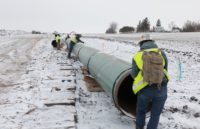To meet its growing power demands, Ontario has launched what it terms the largest competitive energy procurement in province history. Over the next decade, the effort aims to procure up to 5 GW of new power—through a controversial mix of natural gas, renewables, nuclear, biomass and hydroelectric—in an “all-of-the above” approach to fill a projected 60% energy gap by 2050, said Energy Minister Stephen Lecce.
The province’s Independent Electricity System Operator, which manages Ontario’s power system, must provide by Sept. 20 a design framework to accelerate capacity procurement completion by Feb. 28, 2026.
Ontario’s current grid-connected generation capacity totals 38.26 GW. This new procurement builds on one completed this spring consisting of 3 GW of new battery storage and natural gas projects that have to come online in the 2026-2028 timeframe. Thirteen battery storage projects selected from among 48 bids include one in Edwardsburgh-Cardinal, Ont., which at 390 MW would be Canada’s largest such installation. A 250-MW project is already under construction in southern Ontario.
All of the projects are required to provide economic incentives for indigenous communities, and the grid operator said those mandates also apply to the new procurement. There also are restrictions on clean energy project siting in agricultural areas, particularly solar.
“We are ready to move quickly to secure supply from all eligible technologies,” said Lesley Gallinger, grid operator CEO.
Regarding new nuclear power in the province, Nicolle Butcher, chief operations officer of Ontario Power Generation, provider of about 50% of the province’s power, told attendees at the Future Energy Economy Summit in Syracuse, N.Y., on Sept. 5 that it aims to have its first advanced nuclear power facility online before 2030, when its six Candu full-scale reactors dating to the 1970s are set to close.
She said contractor AECON and others have begun work at the site of its GE Hitachi-designed small modular reactors. Ontario Power is building four SMRs on the site of its four-unit Darlington nuclear plant, which has operated since the mid-1980s. “You need four at one location to understand the technology,” Butcher said. Refurbishment of Darlington’s last unit has begun. The utility also will deploy remote microgrids, Butcher said. “We have incredible support for nuclear [facilities] in municipalities that host them,” she noted.
Ontario’s energy ministry has said that the workforce required to develop new province resources will depend on the energy mix and number of projects procured. “We hired 1,200 engineers in the last 18 months,” said Butcher. “But it’s the trades workforce we worry about the most.”
Ontario’s decision to include natural gas in its future power mix has drawn fire. A national goal of net-zero power generation by 2035 has many concerned it would impact 20-year gas development contracts already awarded.




